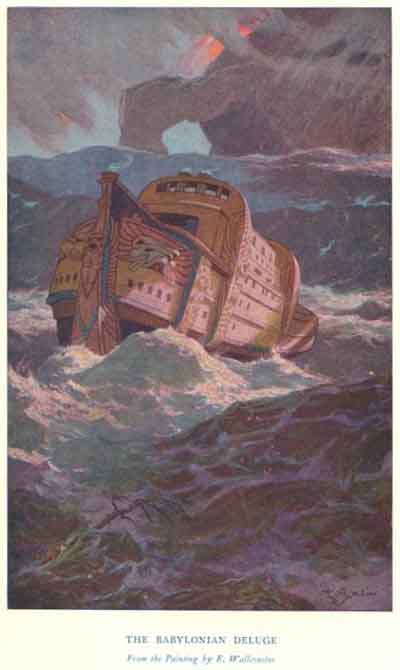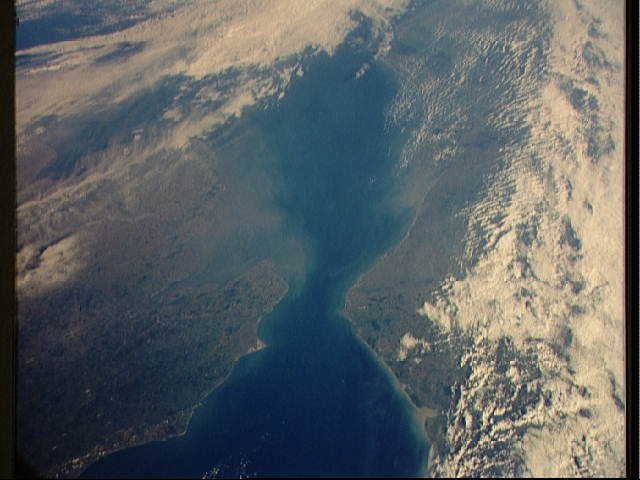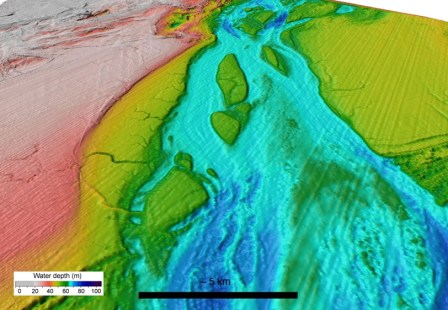
Megafloods
"Water, water, everywhere, nor any drop to drink."
"The Rime of the Ancient Mariner"
Samuel Coleridge

The floods that ravaged Pakistan and Northern India late summer 2010 left thousands homeless and caused millions of dollars of damage; the Great Flood of 1993, along the Mississippi and Missouri rivers of the American Midwest; the flooding of Florence, November 1966; the North Sea flood of 1953 and many, many others have marked the memories of man for hundreds, even thousands of years, ever since the "Deluge" and Noah's biblical odyssey, which roughly corresponds with the creation of the actual Black Sea but none compare with the gigantic, cataclysmic creation of the English channel.

The Creation of the English Channel
Until now it had been generally accepted that the English Channel was the result of a long slow erosion of the earth, along the lines of the Grand Canyon that took over 17 million years to form, however recently geologists have been studying the possibility that something enormous happened around 450 000 years ago and that the creation of the English Channel happened in the space of months (not even years!!!).
How could that be? what could have happened? What ever it was, and the geologists have a very good idea, supported by some plausible theories and research... it was a good thing that the population of England wasn't what it is today and settlements few and far between because the impact goes beyond the imagination that 3D computer recreations are only just beginning to assimilate.

The Gupta/Collier Theory
Drs Sanjeev Gupta and Jenny S. Collier, Imperial College London, advance the theory that the English Channel's formation was the result of the bursting of a Dyke (Dike) like structure situated approximately where the straits of Dover are today. The sudden discharge of such a huge volume of water such as was contained in a soft water lake to the east of the now English Channel.

A second flood was thought to have occurred about 225,000 years ago when the Rhine and other contributory rivers were ice-dammed into a lake that broke catastrophically through a high weak barrier (probably chalk based). Both floods cut massive flood channels in the dry bed of the English Channel, somewhat like the Channeled Scablands in the USA.
The theory is however questioned, with doubts being raised concerning the sheer force needed to undertake such a formation over such a short period of time. The response from Drs Gupta and Collier is categorical: Their team calculates that 1 million cubic metres of water per second flowed for several months to carve the sea floor valleys, some of which are up to 10 kilometres wide and 50 metres deep. The flow rate was 100 times the average of the Mississippi river today, and 1000 times that of the Rhine.

The Subsequent Impact
The most important impact of the mega flooding and the subsequent separation of the British Isles from the continent is, of course, the historical impact. If the flooding had not taken place and no separation happened then the inhabitants would probably be speaking French today... or who knows, perhaps German.
A less evident after effect of the separation was the impact on the flora and the fauna. The flora and the fauna on the British Isles started to undergo the same evolution process after the megaflooding as did the flora and fauna elsewhere after such geological upheavals. Although nothing as spectacular as the dragons of Komodo, the giant tortoises on the Galapagos or the pygmy elephants of Borneo, fossils of bears and wolfs larger than their continental counterparts have been found.
More enigmatic though, was the impact on the human population. No longer able to circulate to and from the British peninsula, the population on the British side of the newly found English Channel underwent a serious reduction in numbers. Scientists have evidence that over extended periods of time, e.g 100 000 years ago, there were actually no humans living in the British Isles at all, the extremely cold climate of the period making the region totally uninhabitable.
Studies do show, though, that the intermittent presence of land between the continent and the British Isles allowed waves of immigration - approximately eight "incursions", more or successful, have been recorded - one example of an incursion was around 200 000 years ago, but that the Britons living in the British Isles today arrived there approximately 12 000 years ago.
(source: http://news.bbc.co.uk/2/hi/science/nature/5317762.stm)
© Nicholas Richards 2010